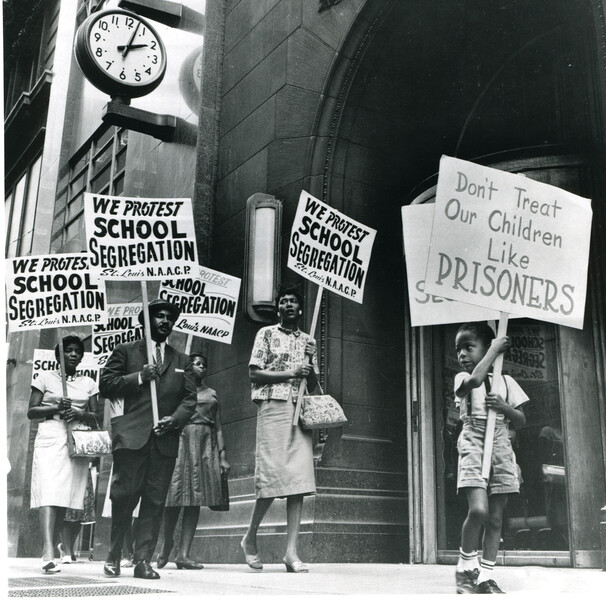My K–12 education in the Deep South positioned me to see my own reflection wherever I looked. I never attended a class with a black student—by law, there were none in my schools. I knew exactly one classmate for whom English was not his first language. (He was an exchange student from Germany.) In my second year of college, my next-door dorm neighbor was black. There were likely a few other black students on campus.
And then things changed—sort of.
As I began my junior year at a different university, school desegregation was the headline in newspapers and on television. My university very carefully admitted a small cohort of black students. The church I attended would not follow suit. The perimeters of my life remained white, middle class, and English speaking. I had no real understanding of societal inequities.
A Lesson in Equity
Then came my first teaching job in a very rural, very poor area of another southern state during the first year of court-mandated integration. School buses brought the black students to school at an extraordinarily early hour each morning and then did a second round of pickups to bring the white students to school. In the afternoon, the buses first took the white students home, and then returned to school around 4:30 or so to take the black students to their neighborhoods. Bathrooms and water fountains in the community still bore signs that read "white only."
It was in this context that I began to develop an understanding of how society sends its young to school on an unequal footing and how schools too often exacerbate the unevenness. As a new high school teacher, I had my first real opportunity to know some black students. They were, of course, every bit as diverse in personalities, approaches to life, and perspectives as my white students—and every bit as wonderful. Some were precocious, some angry, and some goofballs.
Sabrina understood literature at a level that defied her young age—no doubt that understanding was borne of a life replete with challenges. Cleo drew brilliant caricatures of the authors we studied using only what he inferred about them from their stories—despite the fact that he had never seen a caricature.
One student, named Archie, corralled a group of kids to do their homework each afternoon while they waited for the second run of buses. He served as the proctor of this study group and its tutor. His motivation was simply that he couldn't stand the chaos that ensued on the school grounds if students were left to their own devices during the long wait. His success was enviable. Well over half of his charges made the honor roll each marking period, and nearly half qualified for the National Honor Society.
Each of those students broadened my view of the world and expanded my appreciation of its diversity. They also set me on a career-long quest to create classrooms that support equity of access to excellent learning opportunities for all students.
A Long Way, and Yet …
Archie, Sabrina, and Cleo's children surely found public schools to be more receptive to racial, cultural, and language diversity than their parents did. The grandchildren of my original students are no doubt finding still more diversity and openness to it.
And yet, there are so many barriers to educational equity still in place—segregation by income and neighborhood, discomfort in addressing race and ethnicity in classrooms, too few teachers who share backgrounds with "minority" students, racial stereotypes and fixed mindsets about the capacity of learners, overrepresentation of students of color in special education and underrepresentation in services designed for promising students, parents who insist on exclusive rather than inclusive learning experiences and school leaders who give in to that pressure, and curriculums that don't embrace the realities of multiple histories, contributions, and perspectives equally.
I worry particularly about our inclination as teachers to "teach students where they are" rather than "teaching up"—a practice that begins with high-end curriculum for all students in heterogeneous settings and scaffolds various entry points to serve a broad range of students.
I'm struck by a comment from Bill Ayers:
The first and fundamental challenge for teachers is to embrace students as three-dimensional creatures, as distinct human beings with hearts and minds and skills and dreams and capacities of their own, as whole people much like ourselves. This embrace is initially an act of faith—we must assume capacity even when it is not immediately apparent or visible. We must hew to "the substance of things hoped for, the evidence of things not seen"—because we work most often where aggregating and grouping kids on the flimsiest of evidence is the prevailing common sense, where the toxic habit of labeling youngsters on the basis of their deficits is commonplace.
That, it seems to me, is the step we have yet to take—an imperative if we intend to disrupt educational inequity. To take that step is to set out on a course that leads to developing the vision, skill, and will necessary to achieve that goal.








